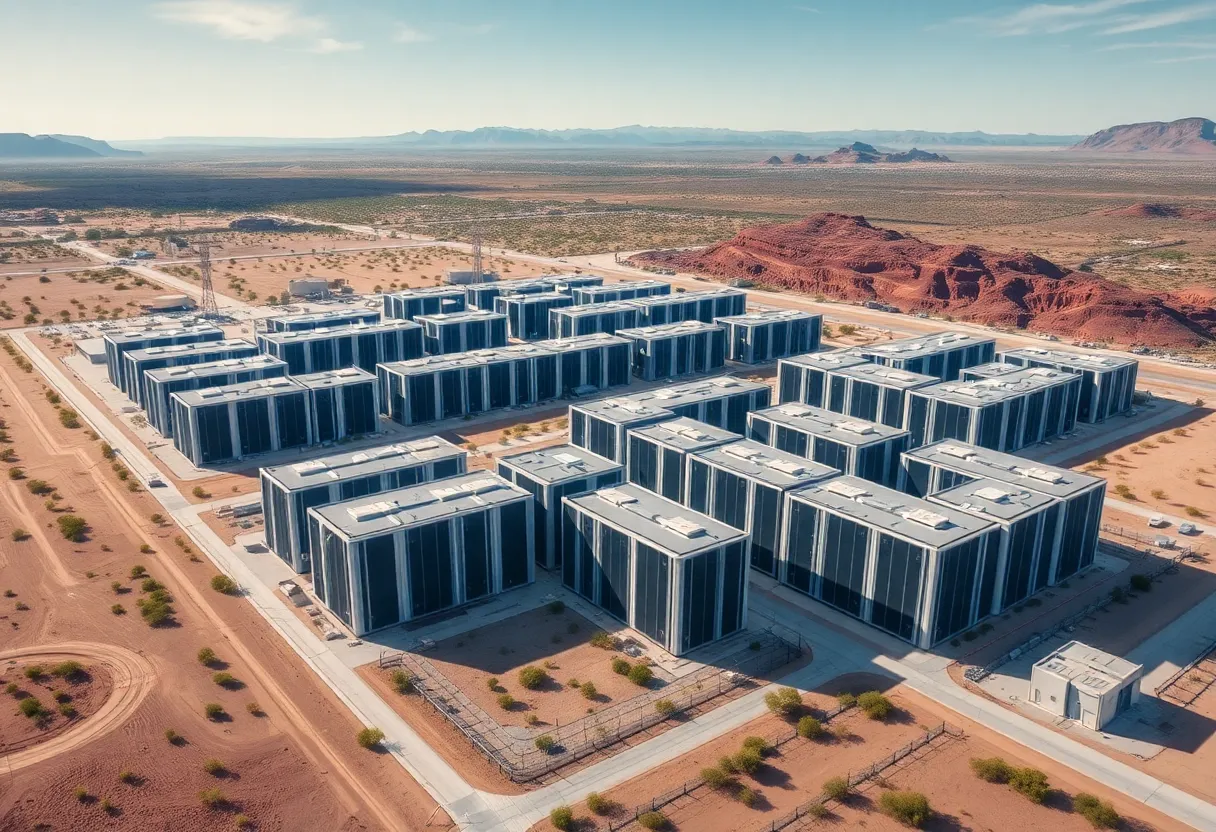News Summary
Arizona is experiencing rapid growth in data centers, now totaling around 118, driven by rising electricity demand and technological advancements. This surge raises alarms regarding the sustainability of power grids as electricity demand may rise by 4.5% annually, while water consumption could increase significantly, exacerbating drought issues. The community expresses concerns about balancing job creation with environmental impacts, as seen in recent protests against major data center projects. City officials are focused on the implications for water rights and economic advantages while urging upgrades to infrastructure.
Arizona is witnessing a rapid growth in the number of data centers, currently numbering around 118, with additional projects in various stages of development. This surge is primarily driven by an increase in electricity demand due to the expansion of technology, including artificial intelligence and machine learning applications.
A report from Western Resource Advocates outlines a concerning trend: electricity demand in the Southwest is expected to increase significantly over the next decade. In Arizona, the annual electricity demand from data centers has already risen by 1% since 2010. With advancements in technology, this demand may escalate to as much as 4.5% per year, which raises alarms about the sustainability of the state’s power grids.
Beyond electricity, data centers also require substantial amounts of water for cooling, thereby intensifying concerns in Arizona, a state that is currently grappling with drought conditions. Projections indicate that water consumption by data centers could rise from an estimated 4.5 billion gallons in 2030 to 7 billion gallons annually by 2035. This volume of water is enough to provide for nearly 200,000 people, highlighting a critical resource allocation challenge.
Utility reporters have pointed out that consumers in Arizona are not yet shouldering the costs associated with the growth of data centers. This prompts questions regarding who will eventually bear these costs. While some data center operators argue that increased demand will not necessarily lead to higher residential energy prices—citing examples from other states—concerns remain about future implications for local consumers.
The community is expressing growing concerns about the balance between job creation and the environmental impact of data centers. Recent protests in Tucson against the proposed Project Blue, a large-scale Amazon Web Services data center, bring attention to these issues. The project is anticipated to be the largest data center in Arizona, requiring significant amounts of water and power, potentially making it Tucson Water’s largest customer.
City officials in Tucson are particularly worried about the project’s environmental consequences, economic advantages, and issues relating to water rights. The proposed data centers are projected to consume more power than any other customer served by Tucson Electric Power.
In response to the challenge posed by rising water demands, Phoenix has approved a $300 million plan to upgrade its Cave Creek Water Reclamation Plant. These upgrades aim to ensure the city’s preparedness for future water consumption needs as data centers expand.
Current discussions in Phoenix also focus on regulating data center locations to mitigate potential impacts on neighborhoods and the environment. Utility providers, including Arizona Public Service (APS), have reported that they have had to turn away prospective data center customers due to inadequate electricity transmission infrastructure. This situation highlights the urgent need for investment in infrastructure to accommodate future growth.
If all planned data center facilities are constructed, their total electricity use might reach 19,000 megawatts. In contrast, APS currently manages peak demand of approximately 8,200 megawatts, indicating a substantial gap that needs to be addressed.
Investigations into the possible financial repercussions for residential consumers, stemming from utility upgrades necessary to support data center expansions, are ongoing. Although data centers do provide significant property tax revenue for local governments while requiring minimal local government services, the larger implications on both power and water resources continue to warrant careful scrutiny.
As Arizona navigates this critical juncture in data center expansion, balancing economic growth with resource management will be essential in shaping the state’s future.
Deeper Dive: News & Info About This Topic

Author: STAFF HERE PHOENIX WRITER
The PHOENIX STAFF WRITER represents the experienced team at HEREPhoenix.com, your go-to source for actionable local news and information in Phoenix, Maricopa County, and beyond. Specializing in "news you can use," we cover essential topics like product reviews for personal and business needs, local business directories, politics, real estate trends, neighborhood insights, and state news affecting the area—with deep expertise drawn from years of dedicated reporting and strong community input, including local press releases and business updates. We deliver top reporting on high-value events such as the Waste Management Phoenix Open, Cactus League Spring Training, and Arizona State Fair. Our coverage extends to key organizations like the Greater Phoenix Chamber of Commerce and Visit Phoenix, plus leading businesses in technology and healthcare that power the local economy such as Intel and Banner Health. As part of the broader HERE network, including HERETucson.com, we provide comprehensive, credible insights into Arizona's dynamic landscape.





